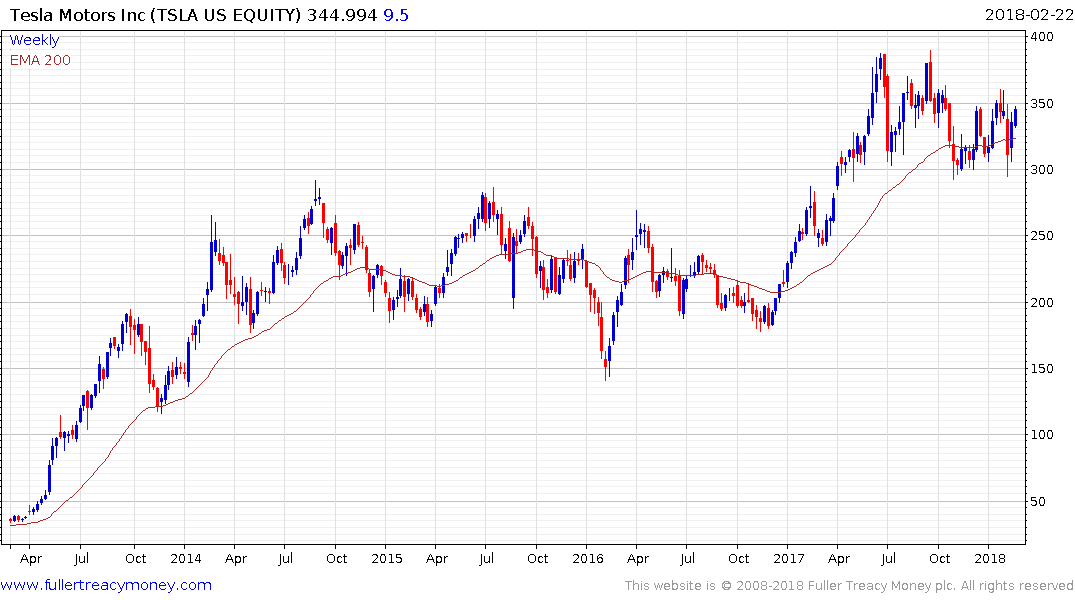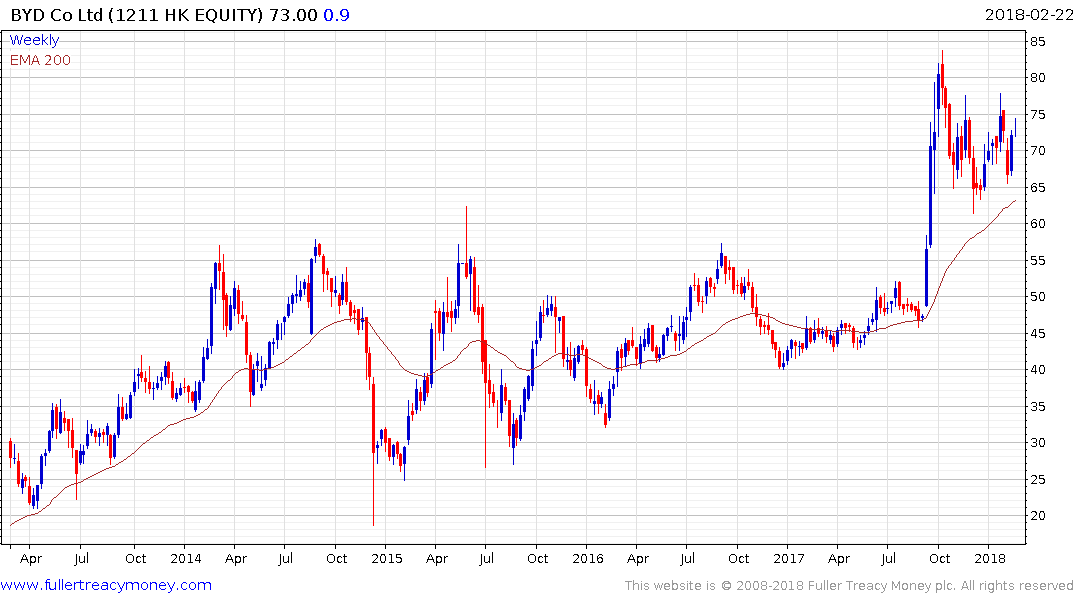The lithium ion battery and the eV Market
Thanks to a subscriber for this report from BMO which may be of interest. Here is a section:
Here is a link to the full report and here is a section:
1. NMC811 Lithium-ion Battery Has Technological Risk → Based on our detailed work on battery chemistry, we believe the consensus view that the next generation lithium ion battery formulation NMC811 (8 parts nickel, 1 part Manganese, 1 part Cobalt) is readily achievable is optimistic. We believe it will be more technically challenging to develop, which impacts some of the more optimistic lithium ion powered EV adoption forecasts. In terms of lithium-ion battery powered EVs, the NMC811 formulation is likely considered a key factor in achieving cost parity with the internal combustion engine (ICE) and increasing the energy necessary to reduce consumer range anxiety. Implication: Battery costs may not come down as fast as many have predicted and these findings reinforce our belief that the current and near-term state of the technology is consistent with our 10% penetration forecast by 2025.
2. The Market Underappreciates the Challenges to Advancing Lithium Ion Battery Chemistry → We believe the market greatly underappreciates the complexity of the internal workings of the lithium ion battery and the performance trade-offs faced by battery designers that limit the pace of technology development in the near term. Implication: There may be other technologies that supplant the current lithium ion battery at some point, but there has been significant ramp in intellectual capital and capital investment in this technology, and the long-term value of innovation is likely underestimated.
3. China Is Leading the Way in EV Demand → There are 172 car companies in China, including the world’s largest EV company, BYD. Environmental imperatives and progressive subsidies geared to supporting better technology, not just EV adoption, have positioned China as the world's hot spot for EV development. Implication: Increasing investment, vehicle range, EV variety and charging infrastructure in addition to government subsidies are all important to driving this sector.
Battery chemistry is complicated and the rate at which energy density doubles is about every five years. That’s quite a bit slower than the 18-month pace of doubling of efficiency seen in the semiconductors sector on which Moore’s Law is based.
Right now, the efficiency of batteries for electric vehicles is probably good enough for the majority of journeys. The primary efforts of companies like Tesla are focused on getting the cost of the current technology down to levels that make electric vehicles profitable. That’s already a major endeavor without also hoping to deliver on improving battery efficiency.
This article from the Financial Times highlights the fact that Dyson’s much vaunted new car venture may not launch with solid state batteries. There is a significant race on to deliver the first commercially viable solid-state battery but most companies believe they will not have a product ready until the early 2020s. It’s at that point the argument for electric vehicles will be incontrovertible versus internal combustion engines.
Here is a section:
Crucially, Dyson is considering using lithium ion batteries rather than solid state in the first car, according to three people.
Although the company has not confirmed a decision, a choice not to use solid state would indicate a scaling back in the technical ambitions for its first vehicle.
The aim is to use solid state in the two future models, one person with sight of the plans said.
Solid state batteries, which Dyson has been developing for years, are a step change beyond lithium ion technology, with the ability to drive further and charge faster.

Tesla has rebounded again from the psychological $300 level and is now back testing the highs near $350. A sustained move above that level will be required to confirm a return to demand dominance.

BYD continues to firm from the region of the trend mean and a sustained move below it would be required to question medium-term scope for continued upside.


